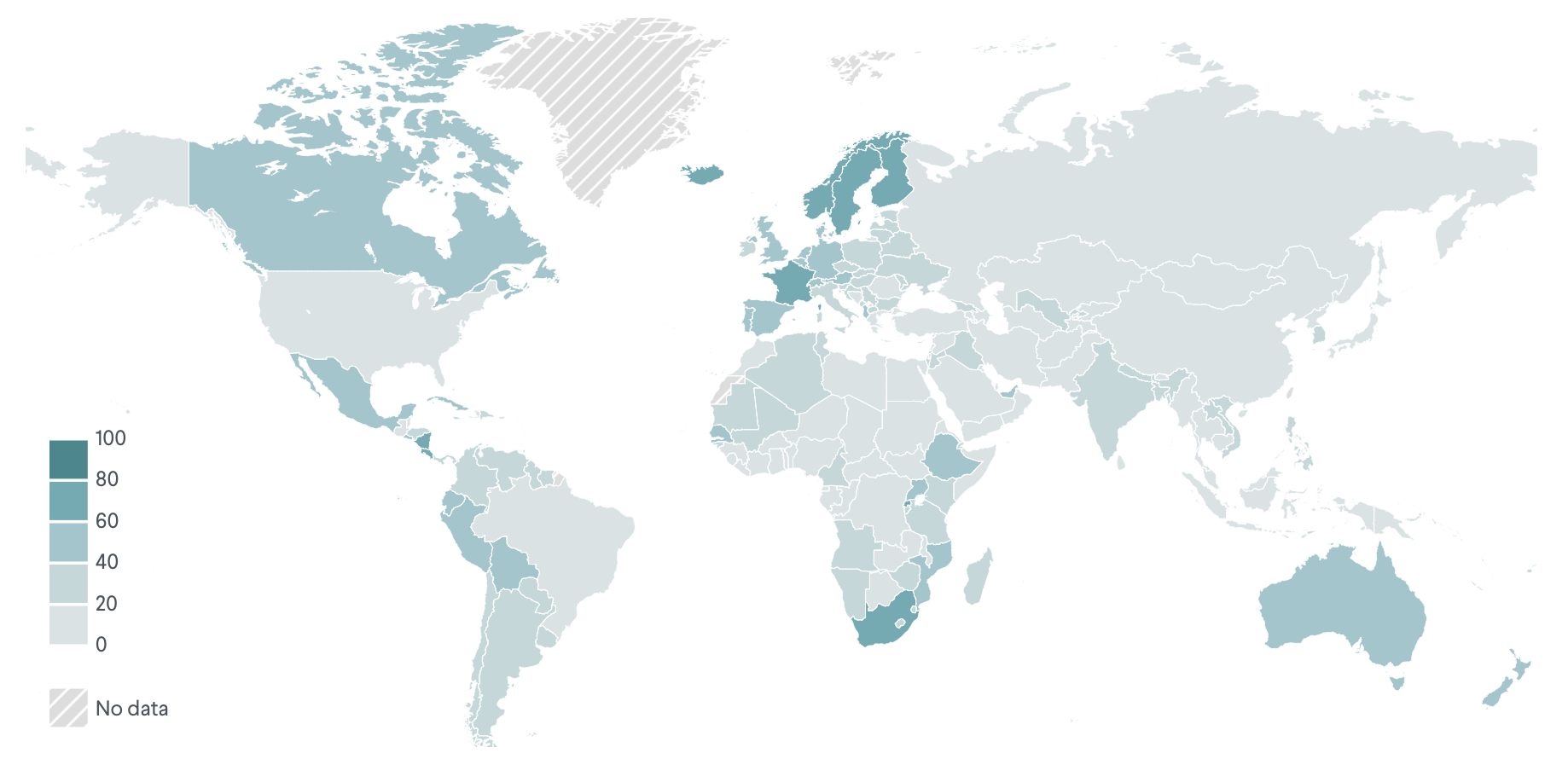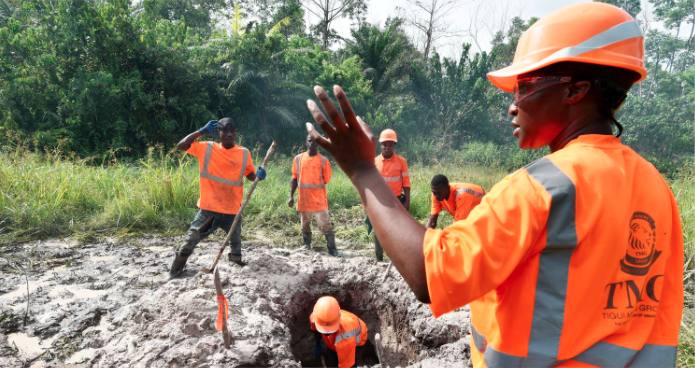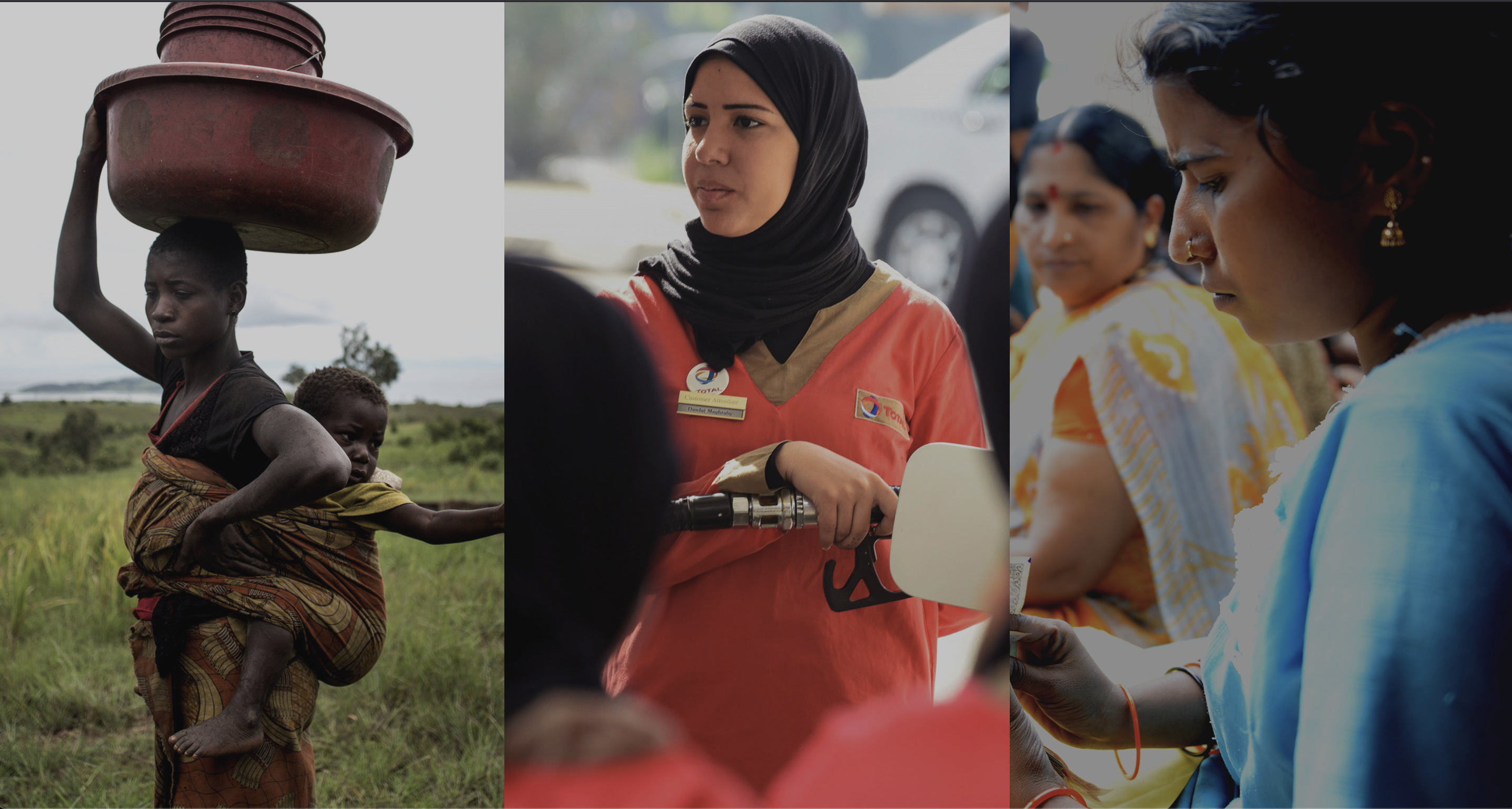Women participated in only fifteen of sixty-seven rounds of talks (including formal and informal negotiations, exploratory meetings, and internationally backed consultations) between 2005 and 2020 (22 percent). In the September 2020 intra-Afghan talks, four women served on the twenty-one-member negotiation team for the Afghan government; no women served on the Taliban’s twenty-one-member team (10 percent women in total), compared to the July 2019 intra-Afghan peace talks, when eleven out of seventy-one delegates were women (15 percent).
Female civil society leaders in the Afghan High Peace Council have mobilized public support for the peace process and worked across divides to bring attention to social and humanitarian concerns. Women have used their few roles on provincial peace councils to broker local deals supporting the reintegration of former combatants, facilitate hostage releases, and counter extremist narratives. Throughout the peace process, civil society leaders have pressured the former Afghan government, the Taliban, and all other parties involved to protect Afghan women’s rights and opportunities in any agreements on Afghanistan’s future.
The Afghanistan Peace Process effectively ended with the Taliban government’s return to power in 2021. Shortly after assuming control, the Taliban dissolved the Afghan Parliament—which was comprised of approximately 27 percent women—as well as the Ministry of Women’s Affairs. No women were appointed to the new cabinet, and since that time the Taliban has engaged in systematic and brutal efforts to ensure women and girls are unable to participate in public life. Women have been largely forbidden from the workplace, girls are unable to receive an education beyond primary school, and women must cover their faces and be accompanied by a male chaperone when leaving the home. Most recently, the Taliban banned women from working for nongovernmental organizations (NGOs) and the United Nations in Afghanistan, endangering millions of lives.
The UN and several governments are currently appealing to restore some of the rights previously afforded to women in Afghanistan. In January 2023, the deputy secretary-general of the United Nations, Amina Mohammed, and the executive director of UN Women, Sima Bahous, traveled to Afghanistan to meet with Taliban officials to appeal the decree banning Afghan women from working for NGOs.
The repressive Taliban government of Afghanistan emerged in 1994 after years of civil conflict and ruled the country from 1996 to 2001. Overthrown in 2001 by a U.S.-led military campaign, the Taliban waged an insurgency against the internationally backed Afghan government that resulted in widespread displacement and destruction. The self-proclaimed Islamic State has also launched devastating attacks on civilians and state institutions with increasing frequency in recent years. The former Afghan government entered numerous rounds of peace talks and reached partial agreements with Taliban elements; many rounds stalled for political reasons or broke down due to miscommunication, stalemates, and spoilers. Negotiation efforts saw some progress in 2020: after nine rounds of negotiations, the Taliban and the United States signed an agreement on February 29, 2020, which paved the way for intra-Afghan talks. Negotiations between the Afghan parties were initially scheduled to begin in March 2020 but were delayed by increased violence and disagreements over prisoner exchanges. In September, official peace talks between the former Afghan government and the Taliban began in Doha, Qatar. But peace efforts effectively came to an end when the Taliban returned to power in 2021. The UN and other governments are currently focused on encouraging the Taliban to reverse the draconian measures they have placed on women and girls.
- Women
- Men
women
women
Afghan women long feared that a peace agreement with the Taliban would trade away women’s rights for the chance to end the war. Women and girls made notable progress after the fall of the Taliban, which adheres to a fundamentalist interpretation of Islam in which women are considered second-class citizens. Under Taliban rule from 1996 to 2001, Afghan women were banned from schools and work, faced public beatings and executions, and endured severe restrictions on their movement. Today, the opportunities to attend school and participate in political and economic life that women and girls enjoyed from 2002 to 2021 have been largely reversed.
Afghan women’s social and political gains translated to limited opportunities for women to participate in the peace process. In sixty-seven rounds of talks (including formal and informal negotiations, exploratory meetings, and internationally backed consultations) between 2005 and 2020, on only fifteen occasions (22 percent) were women present at the table. In recent years, they were more likely to participate in the process, though still at low rates: during the intra-Afghan peace conference in Doha, Qatar, in July 2019, eleven out of the seventy-one delegates were women (15 percent). After the 2020 U.S.-Taliban deal failed to include any provisions on Afghan women’s rights, leaving this issue to the intra-Afghan process, pressure mounted on the former Afghan government to ensure the meaningful participation of women in future political settlements. In the September 2020 intra-Afghan talks, four women served on the twenty-one-member negotiation team for the former Afghan government; no women served on the Taliban’s twenty-one-member team (10 percent women in total).
Beyond formal roles, female civil society leaders sought to influence the peace process through direct consultations with both the former Afghan government and the Taliban. They also participated in government-appointed bodies—such as the Afghan High Peace Council and provincial peace councils—through which they led local peace-building efforts, raised public support for the process, and informed the government’s negotiating positions and security operations.
Afghan women have long feared that negotiators for a peace agreement with the Taliban would trade away women’s rights for the chance to end the war.
Afghan women have made valuable contributions to addressing violence and securing peace at the grassroots level throughout the country. They have made a difference in four ways.
Broker local deals. Female members of provincial peace councils negotiated directly with insurgent leaders to support the reintegration of demobilized Taliban fighters into local communities, facilitate the release of hostages (which they succeeded in doing by first reaching out to the wives of Talibs), and mobilize local support for the peace process, including by encouraging local insurgents to participate in talks. They also worked in schools and community organizations to counter extremist narratives.
Access critical information. Because Afghan women can access spaces in society that men cannot, they offered unique contributions to security operations and informed negotiating positions. Recognizing this, the United States and coalition partners formed teams to increase their outreach to Afghan women and gather intelligence about potential security risks. However, insights are not always heeded: a network of women activists in Kabul and Ghazni reported to local security personnel their suspicion that the Taliban was smuggling weapons into the province, based on an increase in trucks passing through their areas. Security officials did not respond, and, a few months later, the Taliban freed fighters from a Ghazni jail in the largest prison break in years, dealing a significant setback to security efforts.
Build public support. Women’s groups reached out to rural areas that are typically cut off from information about the peace process, sharing updates and soliciting input. For example, female members of the High Peace Council led a nationwide campaign in 2014 across thirty-four provinces, despite the dangerous conditions, to increase public awareness of the process. Female organizers collected twenty-five thousand signatures of women and girls in support of the peace process, which they delivered to then-President Hamid Karzai, Taliban leaders, and the United Nations.
Work across lines. Afghan women frequently organized across cultural and sectarian divides in pursuit of shared priorities and brought attention to social and humanitarian concerns and the right of marginalized groups to participate in the peace process. For example, at the 2004 constitutional convention, women successfully reached across ethnic lines to push for a written commitment to equal rights for all Afghan citizens.
“Women are a target group for all these perpetrators of violence, not least because they are considered to be agents of change and therefore a threat to existence of the war and insurgency altogether. As the country is moving towards reforms and improving institutional capacities, moreover, the role and contributions of women should not be ignored.”
— Wazhma Frogh, cofounder of Research Institute for Women, Peace, and Security
The former Afghan government and international actors pledged to ensure women’s representation in the peace process. President Ashraf Ghani observed that nation-building is impossible without the active role of women, and the former government’s 2015 National Action Plan on women’s participation in peace and security efforts committed to develop a roster of and provide training to potential women negotiators. Prominent Afghan mullahs have focused Friday sermons on outlining women’s contributions to peace-building. And international actors—from the North Atlantic Treaty Organization (NATO) to the seventy-five countries gathered at the 2016 Brussels Conference on Afghanistan—committed to support Afghan women’s participation in peace and security efforts.






